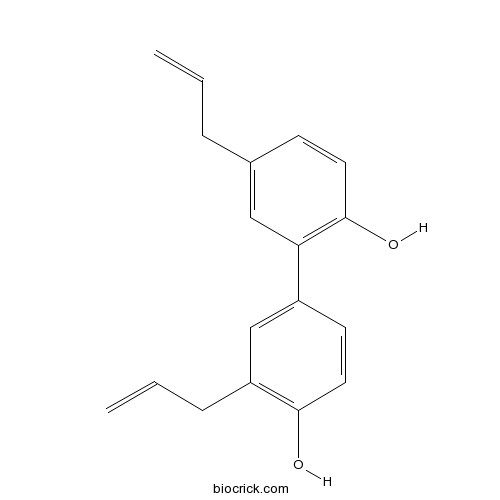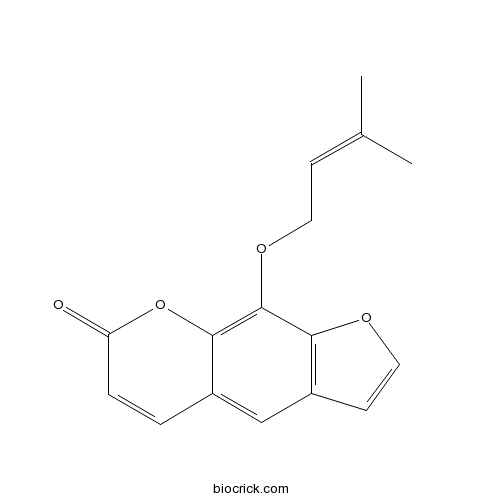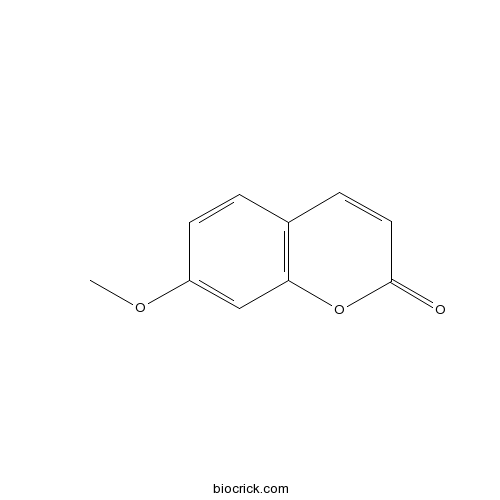Pothos chinensis
Pothos chinensis
1. The products in our compound library are selected from thousands of unique natural products; 2. It has the characteristics of diverse structure, diverse sources and wide coverage of activities; 3. Provide information on the activity of products from major journals, patents and research reports around the world, providing theoretical direction and research basis for further research and screening; 4. Free combination according to the type, source, target and disease of natural product; 5. The compound powder is placed in a covered tube and then discharged into a 10 x 10 cryostat; 6. Transport in ice pack or dry ice pack. Please store it at -20 °C as soon as possible after receiving the product, and use it as soon as possible after opening.
Natural products/compounds from Pothos chinensis
- Cat.No. Product Name CAS Number COA
-
BCN1001
Honokiol35354-74-6
Instructions

-
BCN5574
Imperatorin482-44-0
Instructions

-
BCN2707
7-Methoxycoumarin531-59-9
Instructions

Two new unsaturated fatty acids from the whole plant of Pothos chinensis.[Pubmed: 28361583]
Two new unsaturated fatty acids, (Z)-octadec-13-en-11-ynoic acid (1) and (Z)-octadec-16-en-12,14-diynoic acid (2), along with six known compounds were isolated from the whole plant of Pothos chinensis. The structures of these compounds were elucidated by detailed spectroscopic analysis, including 1D and 2D NMR data. Compound 2 showed moderate antibacterial activity against Staphylococcus aureus.
A Review of Traditional Medicinal Plants from Kachin State, Northern Myanmar.[Pubmed: 27169181]
Medicinal plants are a vital source of medication in developing countries. In Kachin State, Northern Myanmar, the people have a long history of the use of traditional plants for medicinal purposes. This article deals with the 25 most used medicinal plants in Kachin State. They are: Drynariafortunei, Tetrastigma serrulatum, Bauhinia championii, Goniothalamus cheliensis, Juglans regia, Houttuynia cordata, Osmanthus fragrans, Pothos chinensis, Tabemaemontana coronaria, Eryngiumfoetidum, Chloranthus spicatus, Peperomia pellucida, Zanthoxylum armatum, Polygonumfagopyrum, Cymbidiumfloribundum, Amomum kravanh, Coscinium fenestratum, Solanum nigrum, Gnetum parvifolium, Desmodium triquetum, Begonia augustinec, Mappianthus iodoides, Erycibe obtusifolia, Schefflera venulosa, Holarrhena antidysenterica. The different traditional applications, the known chemical constituents and medicinal properties are reported for each plant. The efficacy of several of these plants has been supported by some scientific evidence, while other plants have to be submitted to further investigations to prove the beneficial medicinal properties attributed to them.
[Extraction process and content determination of total organic acids from Pothos chinensis].[Pubmed: 19445138]
To study the optimum extracting process of total organic acids from Pothos chinensis and establish a determination method for total organic acids.


